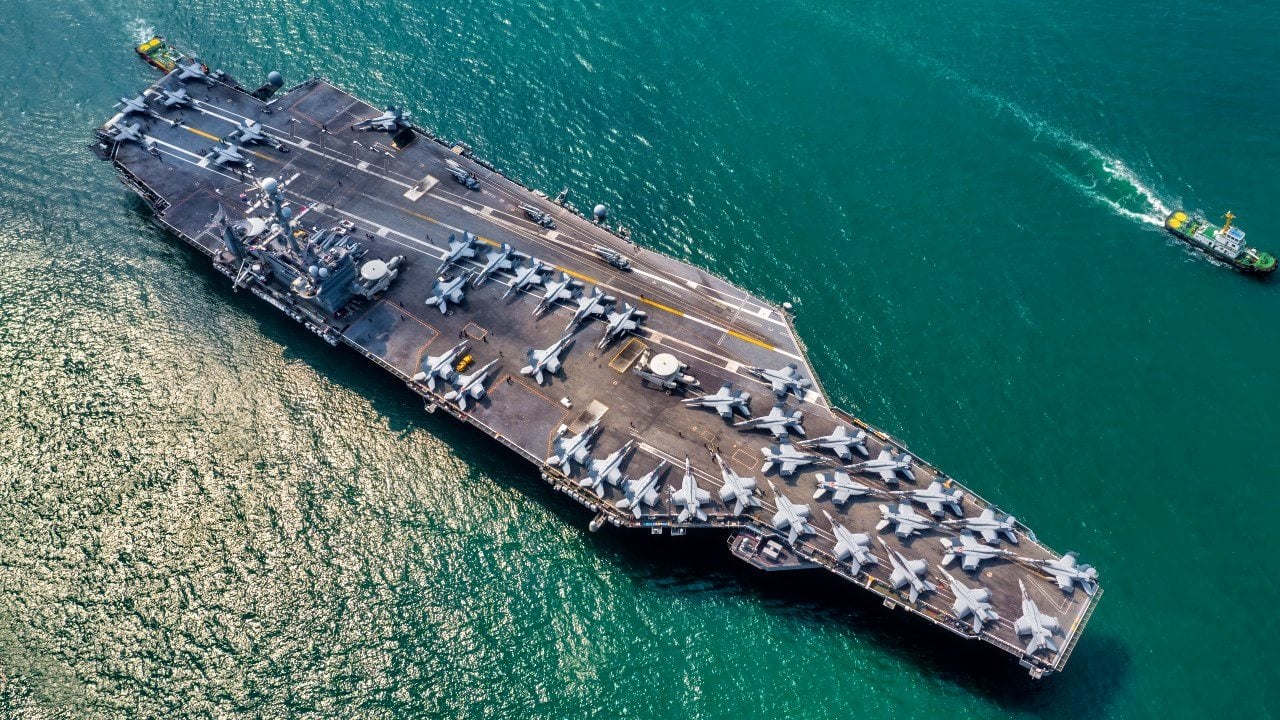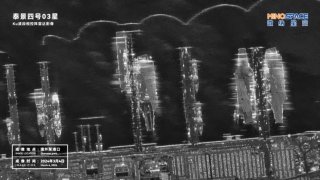China's Satellites Can Easily Spy on 3 U.S. Navy Aircraft Carriers
In space, China's capabilities are highlighted by recent images from the Taijing-4 03 satellite, which captured detailed radar images of the U.S. Navy's Naval Station Norfolk.
Summary: In space, China's capabilities are highlighted by recent images from the Taijing-4 03 satellite, which captured detailed radar images of the U.S. Navy's Naval Station Norfolk.
-Clearly, Beijing was looking at U.S. Navy aircraft carriers and warships.
-This development underscores China’s growing prowess in space surveillance, echoing historical space race dynamics and marking a significant concern for U.S. national security.
China's Surveillance Reach Extends to Space with Detailed Images of U.S. Naval Base
China has been asserting itself in multiple domains. At sea, China’s navy has grown to become the world’s largest, which helps back Beijing’s bold territorial claims throughout the Indo-Pacific. In the air, China has been developing – and perhaps stealing – advanced technology to manufacture fifth-generation platforms. On land, China is developing economic connections throughout Asia with its Belt and Road Initiative.
China is also asserting itself in space. Recent satellite images demonstrate the expanding capabilities of China’s surveillance technology.
“In a display of its growing space prowess and surveillance capabilities, radar images of a U.S. Navy base taken by a Chinese satellite are circulating online,” The Eurasian Times reported. “Appearing first on China’s domestic social media platform Weibo, defense analysts later identified the spacecraft as the Taijing-4 03.”
The Taijing-4 03 is a flat-plate radar imaging satellite, and the U.S. Navy base in the satellite images was Naval Station Norfolk.
You can see an example of the image above shared on social media.
Space and Aircraft Carriers
The Chinese presence in space, and America’s corresponding concern, echoes the early days of the Space Race when the U.S. and the Soviet Union vied to dominate the cosmos. Both sides then believed that whoever controlled space would control the world. And while the U.S. and China are hardly in a Cold War-era style Space Race, China’s improving space-based surveillance technology is no doubt alarming to U.S. officials.
The images of Naval Station Norfolk show three aircraft carriers, two Arleigh Burke-class warships, and four other unidentifiable vessels. Norfolk, sitting in Virginia on America’s East Coast, is one of the U.S. Navy’s most important bases. In fact, it is the world’s largest shore-based naval establishment, capable of supporting 75 ships and 134 aircraft with 14 piers and 11 aircraft hangars. Understandably, Norfolk makes an appealing intelligence target, as any military action that the U.S. takes against the Chinese would rely substantially on naval power.
The satellite that China used to capture the images, the Taijing-4 03, is “the first Chinese commercial satellite of phased-array radar imaging in the Ku band,” according to The Eurasian Times. The Taijing series of satellites is understood to play a vital role in China’s remote sensing capabilities. Its range of applications includes “disaster and environmental surveillance, natural resource exploration, agricultural yield estimation, and land and maritime mapping.” And of course, spying.

The Taijing-4 03 is believed to be privately made. The logo on the satellite reads Mino Space, which indicates the satellite belongs to the Beijing Weina Star Technology Company. News outlet CGTN believes the satellite is part of a “five-satellite constellation” used for scientific research and environmental surveys. And spying.
Global Times reported that the Taijing-4 03 is equipped with a “synthetic aperture radar and artificial intelligence processors, which can realize raid detection and identification of targets at sea and airports via real-time image transmission.” With such capabilities, the satellite clearly has immense military potential.
About the Author: Harrison Kass
Harrison Kass is a defense and national security writer with over 1,000 total pieces on issues involving global affairs. An attorney, pilot, guitarist, and minor pro hockey player, Harrison joined the US Air Force as a Pilot Trainee but was medically discharged. Harrison holds a BA from Lake Forest College, a JD from the University of Oregon, and an MA from New York University. Harrison listens to Dokken.


